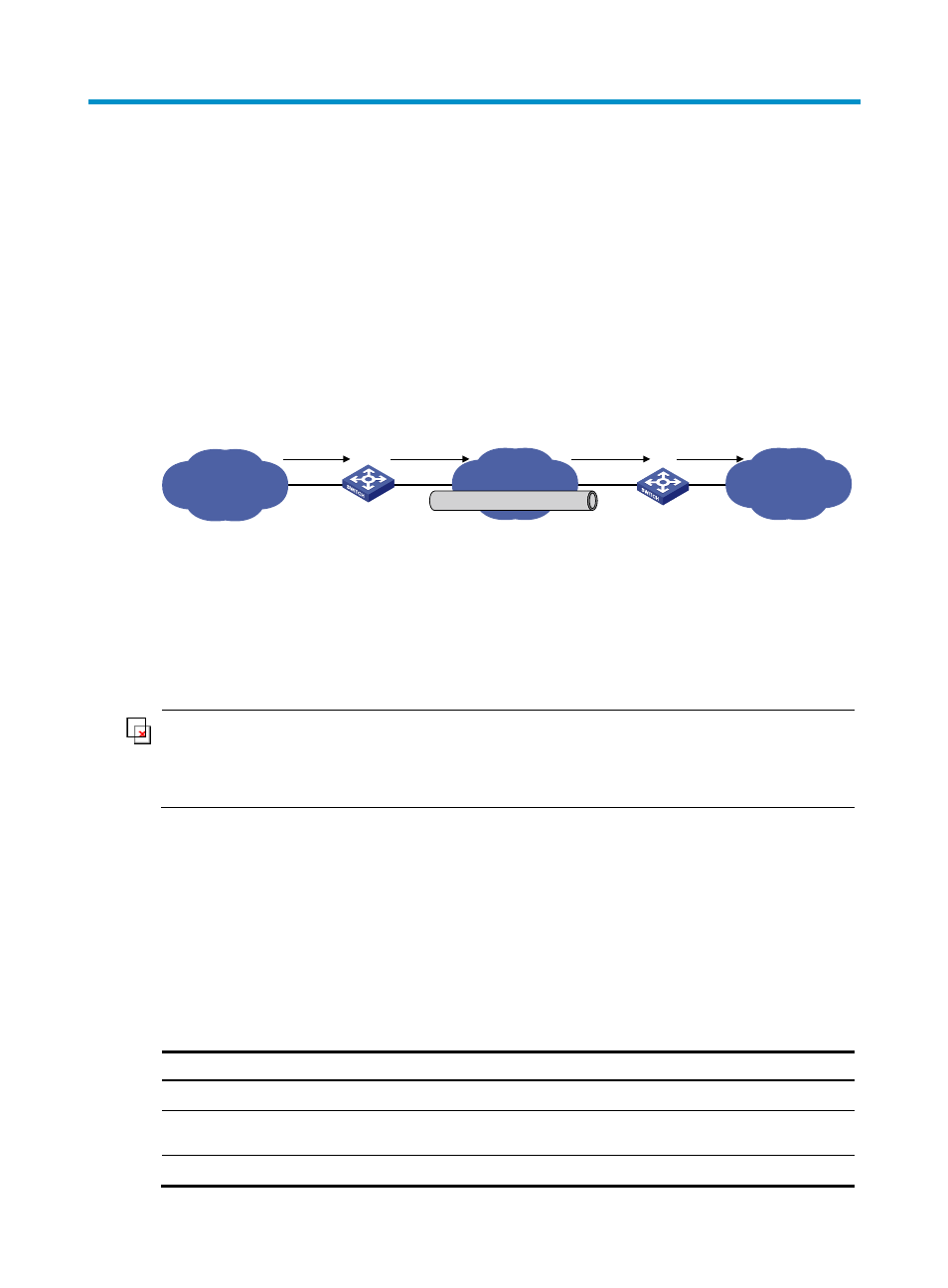Configuring tunnel end packets policy routing, Introduction to tunnel end packets policy routing, Configuring a qos policy – H3C Technologies H3C S12500 Series Switches User Manual
Page 437

421
Configuring tunnel end packets policy routing
Introduction to tunnel end packets policy routing
A tunnel end device refers to a device where the outgoing interface of a tunnel resides. Tunneled packets
that a tunnel end device receives are tunnel end packets. In the example shown in
, Switch B
is a tunnel end device, and packets that Switch B receives are tunnel end packets. The tunnel end device
de-encapsulates tunnel end packets, and then forwards them to the X protocol network. To implement
policy routing of tunnel end packets, use QoS policy routing instead of policy-based routing (PBR).
Figure 127 X protocol network interconnection through a GRE tunnel
Different from the traditional destination-based routing mechanism, QoS policy routing makes routing
decisions based on the source address and other criteria. For more information about QoS policies, see
ACL and QoS Configuration Guide.
QoS policy routing takes precedence over destination-based routing. QoS policy routing applies to the
packets matching the specified criteria, and other packets are forwarded through destination-based
routing.
IMPORTANT:
To specify a next hop for the traffic redirecting action of a QoS policy, you cannot specify an MPLS L3VPN
instance at the same time, so MPLS L3VPN tunnel packets can only be redirected to a public network
interface. For more information about MPLS L3VPN, see
MPLS Configuration Guide.
Configuring tunnel end packets policy routing
You can implement policy routing of tunnel end packets by configuring and applying a QoS policy on
the tunnel end device.
For information about relevant commands, see ACL and QoS Command Reference.
Configuring a QoS policy
Step Command
1.
Enter system view.
system-view
2.
Create a class and enter class
view.
traffic classifier tcl-name [ operator { and | or } ]
3.
Configure the match criteria.
if-match [ not ] match-criteria
X protocol
Group 1
Switch A
Switch B
X protocol
Group 2
IP network
GRE tunnel
X protocol
packets
X protocol
packets
Tunnel end
packets
Tunnel
packets
